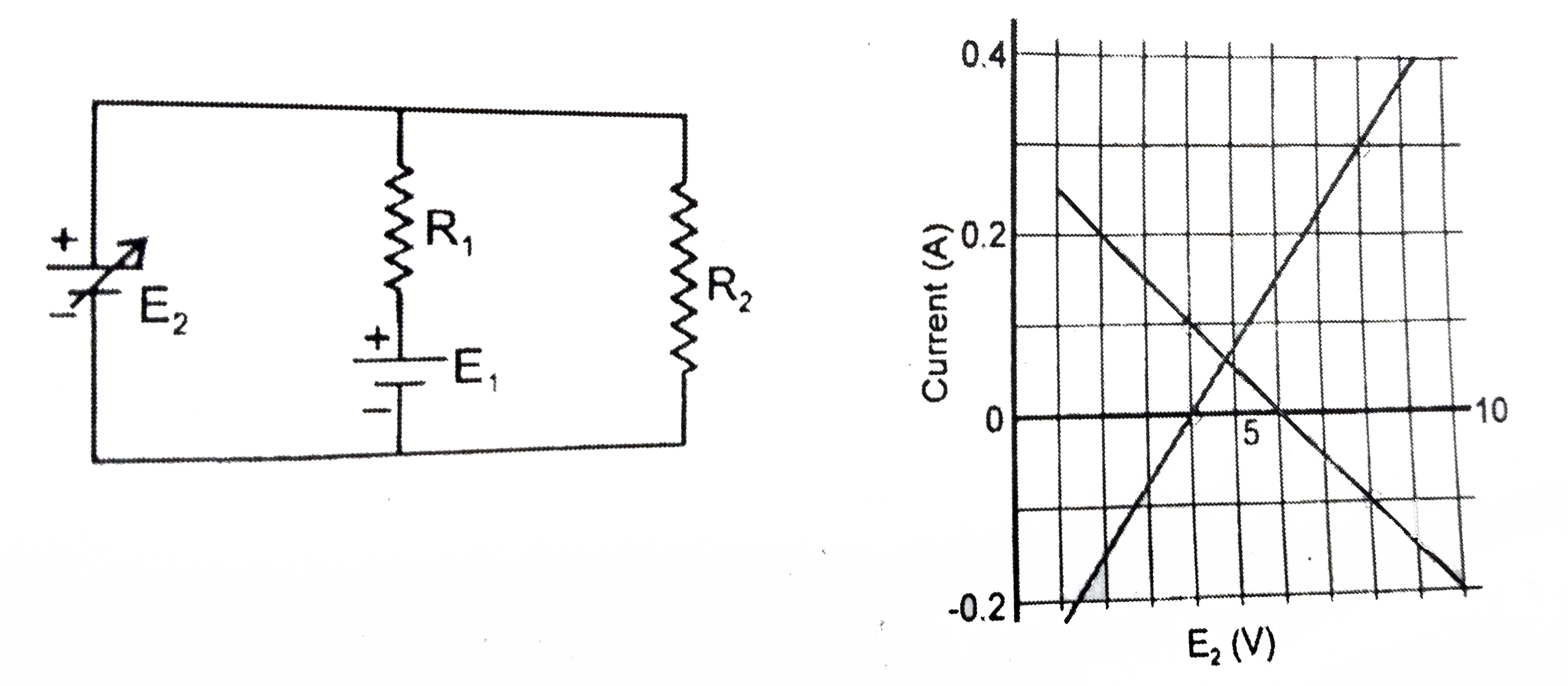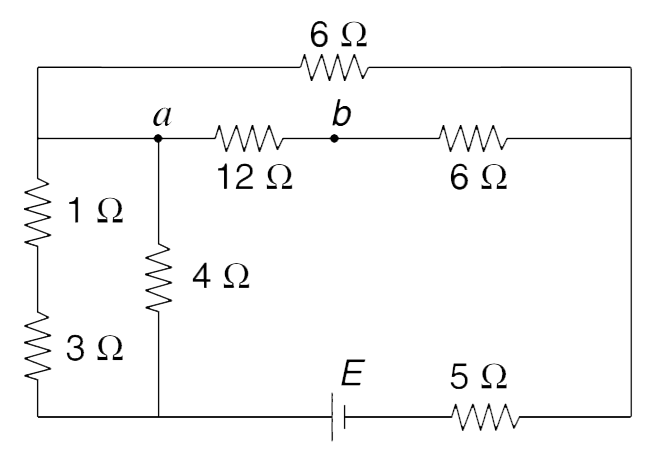In the circuit given in the figure, both batteries are ideal . Emf E1 of battery 1 has a fixed value, but emf E2 of battery 2 can be varied between 1.0Vand10.0V . The graph gives the currents through the two batteries as a function of E2 but are not marked as which plot corresponds to which battery. But for both plots, current is assumed to be negative when the direction of the current through the battery is opposite to the direction of that battery's emf (direction of emf is from negative to positive.)

The value of emf E1 is
10Ω
20Ω
30Ω
40Ω
The correct Answer is:D
Step by step video, text & image solution for In the circuit given in the figure, both batteries are ideal . Emf E_1 of battery 1 has a fixed value, but emf E_2 of battery 2 can be varied between 1.0V and 10.0 V . The graph gives the currents through the two batteries as a function of E_2 but are not marked as which plot corresponds to which battery. But for both plots, current is assumed to be negative when the direction of the current through the battery is opposite to the direction of that battery's emf (direction of emf is from negative to positive.) The value of emf E_1 is by Physics experts to help you in doubts & scoring excellent marks in Class 12 exams.
Updated on:21/07/2023Topper's Solved these Questions
- CURRENT ELECTRICITYBOOK - RESONANCECHAPTER - CURRENT ELECTRICITYEXERCISE - Exrcies-3(PART-1)
22 Videos
- CURRENT ELECTRICITYBOOK - RESONANCECHAPTER - CURRENT ELECTRICITYEXERCISE - Exrcies-3(PART-2)
23 Videos
- CURRENT ELECTRICITYBOOK - RESONANCECHAPTER - CURRENT ELECTRICITYEXERCISE - Exercise-2 (Part-3)
22 Videos
- COMMUNICATION SYSTEMSBOOK - RESONANCECHAPTER - COMMUNICATION SYSTEMSEXERCISE - Exercise 3
13 Videos
- DAILY PRACTICE PROBLEMBOOK - RESONANCECHAPTER - DAILY PRACTICE PROBLEMEXERCISE - DPP.No.71
1 Videos
Similar Questions
Knowledge Check
In the circuit given in the figure, both batteries are ideal . Emf E1 of battery 1 has a fixed value, but emf E2 of battery 2 can be varied between 1.0Vand10.0V . The graph gives the currents through the two batteries as a function of E2 but are not marked as which plot corresponds to which battery. But for both plots, current is assumed to be negative when the direction of the current through the battery is opposite to the direction of that battery's emf (direction of emf is from negative to positive.)
 ,
,
The resistance R2 is equal toA10ΩB20ΩC30ΩD40Ω
In the circuit givenn below, both batteries are ideal. EMF E1 of battery 1 has a fixed value but emf E2 of battery 2 can be varied between 1.0 V and 10.0 V the graph gives the currents through the two batteries as a function of E2, but are not marked as shown plot corresponds to which battery. but both plots, current is assumed to be negative when the direction of the current through the battery is opposite the direction of that battery's emf. (direction of emf is from negative to positive).
Q. The resistance R1 has valueA10ΩB20ΩC30ΩD40ΩIn the circuit given below, both batteries are ideal. Emf E1 of battery 1 has a fixed value, but emf E1 of battery 2 can be varied between 1.0 V and 10.0 and 10.0 V. The graph gives the currents through the two batteries as a function of E2, but are not marked as which plot corresponds to which battery. But for both ploth, current is assumed to be negative when the direction of the current through the cattery is oppositi the direction of that battery's emf. (Direction of emf is from negative to positive)

The resistance R1 has valueA10ΩB20ΩC30ΩD40Ω
In the given figure, the current through the 20 V battery is

View SolutionIn the circuit shown, the resistances are given in ohms and the battery is assumed ideal with emf equal to 3.0 V.

View SolutionTwo ideal diodes are connected to a battery as shown in the circuit. The current supplied by the battery is

View SolutionTwo ideal diodes are connected to a battery as shown in the circuit. The current supplied by the battery is

View SolutionTwo ideal diodes are connected to a battery as shown in the circuit. The current supplied by the battery is

View Solution


